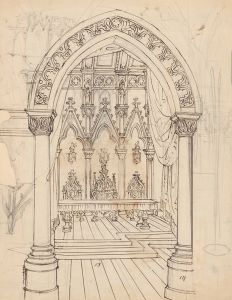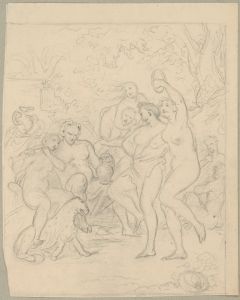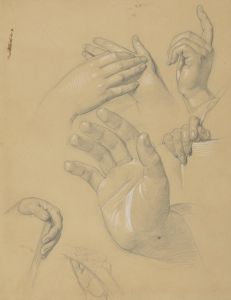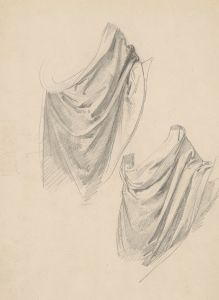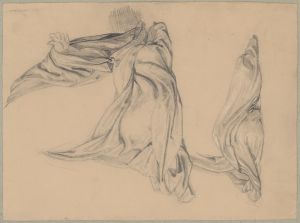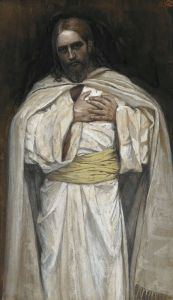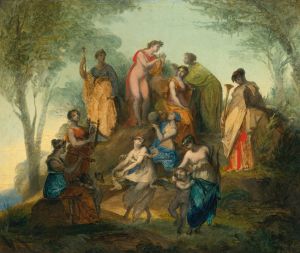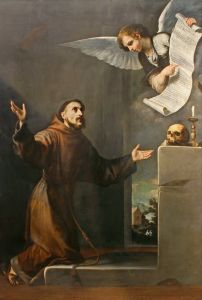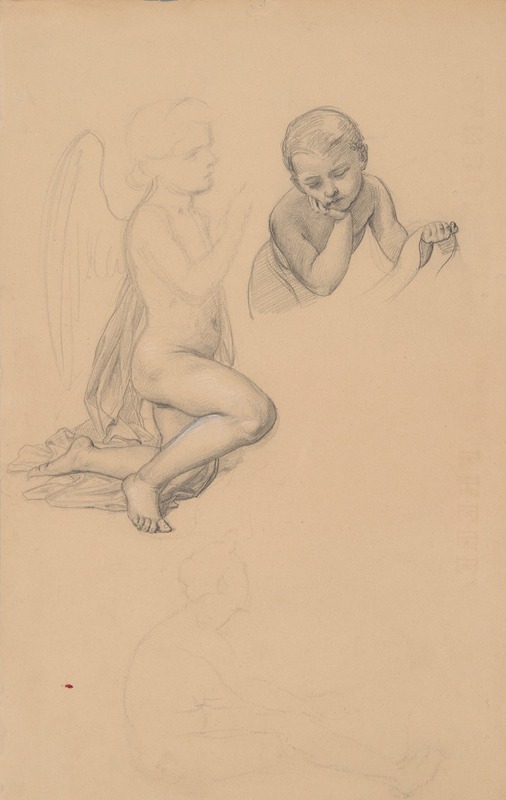
Studies of angels for the painting ‘The Immaculate Conception of the Blessed Virgin Mary’
A hand-painted replica of Józef Simmler’s masterpiece Studies of angels for the painting ‘The Immaculate Conception of the Blessed Virgin Mary’, meticulously crafted by professional artists to capture the true essence of the original. Each piece is created with museum-quality canvas and rare mineral pigments, carefully painted by experienced artists with delicate brushstrokes and rich, layered colors to perfectly recreate the texture of the original artwork. Unlike machine-printed reproductions, this hand-painted version brings the painting to life, infused with the artist’s emotions and skill in every stroke. Whether for personal collection or home decoration, it instantly elevates the artistic atmosphere of any space.
Józef Simmler, a notable Polish painter of the 19th century, is renowned for his historical and religious paintings. One of his significant works is "The Immaculate Conception of the Blessed Virgin Mary," which reflects his deep engagement with religious themes and his meticulous approach to composition and detail.
Simmler was born on March 14, 1823, in Warsaw, Poland, and he studied art in various European cities, including Dresden, Munich, and Paris. His education and exposure to different artistic styles and techniques significantly influenced his work. Simmler is often associated with the Romantic movement, although his works also exhibit elements of realism.
"The Immaculate Conception of the Blessed Virgin Mary" is a painting that depicts the Catholic doctrine of the Immaculate Conception, which holds that Mary, the mother of Jesus, was conceived without original sin. This doctrine was formally defined by Pope Pius IX in 1854, and it has been a popular subject in Christian art for centuries.
Simmler's painting is notable for its detailed and reverent portrayal of the Virgin Mary. In the artwork, Mary is often depicted in a serene and contemplative pose, surrounded by angels. The angels in the painting are meticulously rendered, showcasing Simmler's skill in capturing the ethereal and divine nature of these celestial beings. The studies of angels for this painting reveal Simmler's dedication to achieving a high level of detail and realism in his work. These studies likely involved numerous sketches and preparatory drawings, where Simmler would have explored different poses, expressions, and arrangements to create a harmonious and spiritually uplifting composition.
The painting itself is characterized by its use of light and color to create a sense of divine presence. The soft, glowing light that surrounds Mary and the angels enhances the spiritual atmosphere of the scene. Simmler's use of color, particularly the blues and whites associated with the Virgin Mary, further emphasizes the purity and holiness of the subject.
Simmler's attention to detail and his ability to convey deep religious sentiment through his art made him a respected figure in Polish art circles. His works, including "The Immaculate Conception of the Blessed Virgin Mary," are celebrated for their technical excellence and their ability to inspire devotion and reflection.
Józef Simmler passed away on March 1, 1868, in Warsaw, but his legacy lives on through his contributions to Polish art and his masterful depictions of religious themes. His painting "The Immaculate Conception of the Blessed Virgin Mary" remains a testament to his skill and his deep engagement with the spiritual and artistic traditions of his time.






